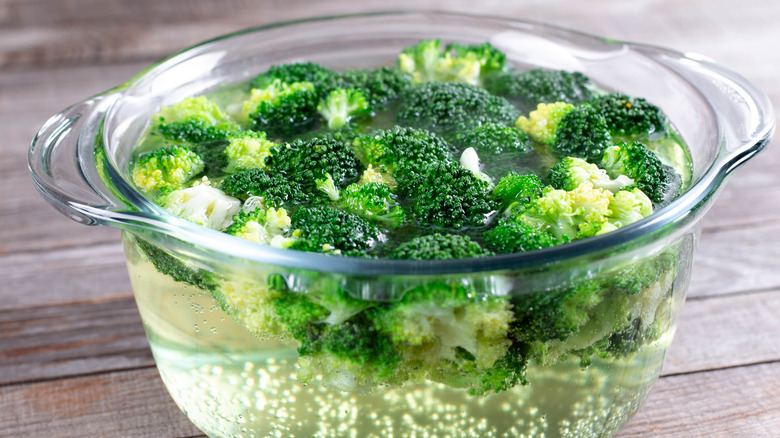The Reason You Should Pay Close Attention When Blanching Vegetables
Although blanching is one of the 40 essential recipe terms you should know, it's not so much a cooking method as it is a method of prepping food — especially vegetables — for long-term freezer storage, per the National Center for Home Food Preservation. Blanching isn't required as a matter of food safety, according to Clemson University Extension, but it can help your vegetables stand up better and longer to freezing in terms of their flavor, texture, nutrient profile, and even how they look (which really does matter, according to science). Indeed, an adequately blanched vegetable can be frozen for as long as 8-12 months without undergoing any significant loss in quality, as the University of Minnesota Extension points out.
To properly blanch, place the vegetable in boiling water for a brief time, not long enough to cook it or even to parboil it, but long enough to halt what the USDA characterizes as enzyme activity within its cells. That activity is responsible for the vegetable's deterioration over time. Although freezing alone can slow that enzyme activity, it can't halt it — not the way that blanching can. Which begs the question, how do you know when your veggie's done blanching?
Of course, it depends upon which vegetable you're working with and how much of it. But if you're willing to pay close attention, you just need to remember one rule.
Eyes on the prize
Effective blanching requires knowing how long to keep your vegetables in the boiling water before it's time to shock them in an ice water bath (via America's Test Kitchen). This varies by vegetable, according to National Center for Home Food Preservation. For example, onion slices take a mere 10-15 seconds, while cabbage leaves need a minute and a half. Artichokes need seven. And while medium-sized Brussels sprouts take just three minutes to blanch, larger Brussels sprouts require five. With all the vegetables, you can see how that might be a lot to remember.
Fortunately, there's an easy way to figure out how long any given vegetable should blanch, and it's virtually foolproof. What you'll want to watch for is the color of the veggies going from dull to bright, advises Better Homes & Gardens. Blanching releases gases trapped between the vegetable's pigmented flesh and its skin, allowing the pigment to show through (via MasterClass).
Until your veggie brightens, it hasn't blanched for long enough (aka, under-blanching). As soon as you see it, transfer your veggies to an ice water bath to interrupt the cooking process. Clemson University Extension advises you keep the veggies in the ice bath for at least as much time as they spent in hot water. Using larger vegetables or working in batches may require freshening the water as it warms up.

